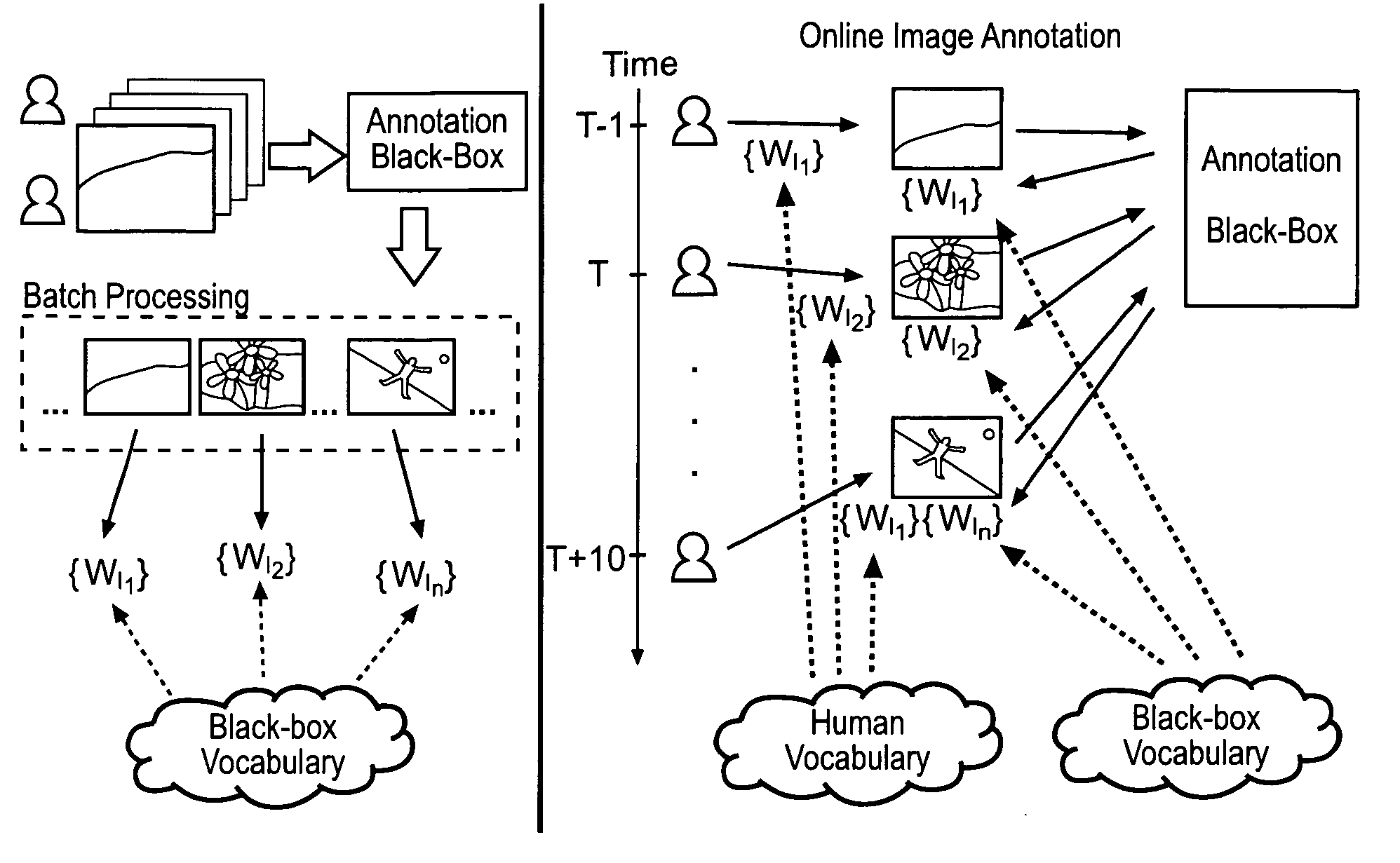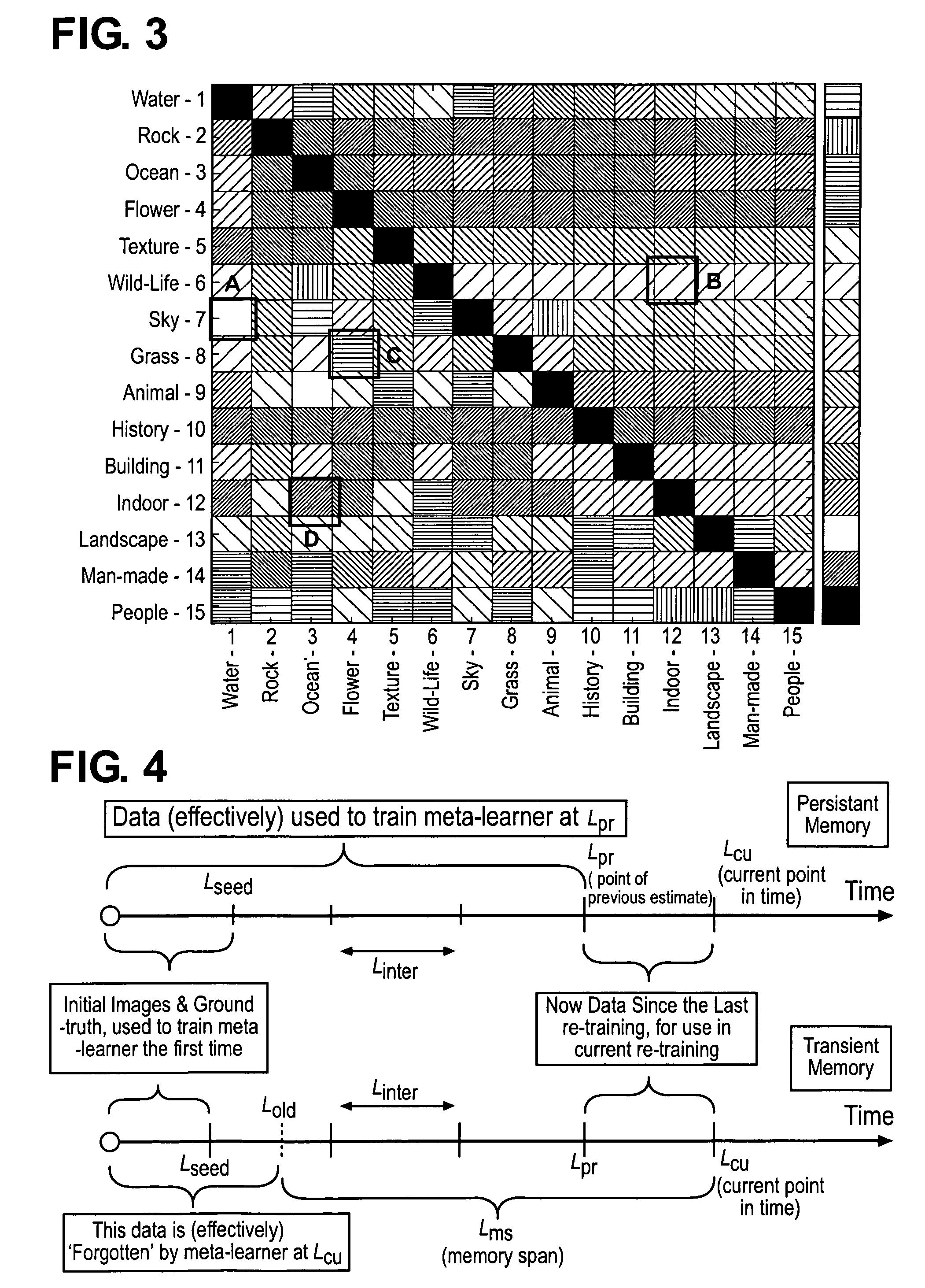Tagging over time: real-world image annotation by lightweight metalearning
- Summary
- Abstract
- Description
- Claims
- Application Information
AI Technical Summary
Benefits of technology
Problems solved by technology
Method used
Image
Examples
Embodiment Construction
Related Work
[0027]Research in automatic image annotation can be roughly categorized into two different ‘schools of thought’: (1) Words and visual features are jointly modeled to yield compound predictors describing an image or its constituent regions. The words and image representations used could be disparate or single vectored representations of text and visual features. (2)
[0028]Automatic annotation is treated as a two-step process consisting of supervised image categorization, followed by word selection based on the categorization results. While the former approaches can potentially label individual image regions, ideal region annotation would require precise image segmentation, an open problem in computer vision. Although the latter techniques cannot label regions, they are typically more scalable to large image collections.
[0029]The term meta-learning has historically been used to describe the learning of meta-knowledge about learned knowledge. Research in meta-learning covers...
PUM
 Login to View More
Login to View More Abstract
Description
Claims
Application Information
 Login to View More
Login to View More - R&D
- Intellectual Property
- Life Sciences
- Materials
- Tech Scout
- Unparalleled Data Quality
- Higher Quality Content
- 60% Fewer Hallucinations
Browse by: Latest US Patents, China's latest patents, Technical Efficacy Thesaurus, Application Domain, Technology Topic, Popular Technical Reports.
© 2025 PatSnap. All rights reserved.Legal|Privacy policy|Modern Slavery Act Transparency Statement|Sitemap|About US| Contact US: help@patsnap.com



